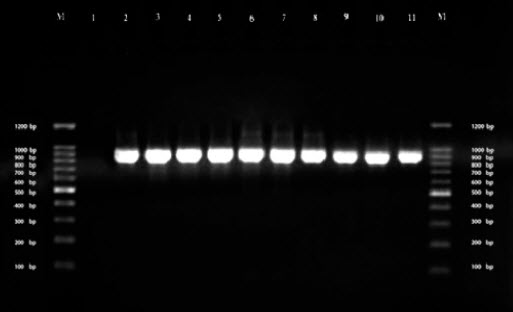Prevalence of coagulase negative Staphylococcus including methicillin resistant strains in buffalo subclinical mastitis in northwest of Iran
Keywords:
Bubalus bubalis, buffaloes, subclinical mastitis, CNS, mecA gene, IranAbstract
Staphylococcal mastitis is a worrisome dairy problem worldwide. The emergence of coagulase negative staphylococcus (CNS) as the predominant agent of subclinical mastitis is reported frequently. The aim of the present research was to evaluate the frequency of individual CNS in buffalo subclinical mastitis and to screen the existence of methicillin resistant gene (mecA) among them. A total of 279 bubaline subclinical mastitis milk samples were analysed for the presence of Staphylococcus spp. phenotypically. The isolates were categorized as coagulase positive or negative. A 23S rRNA-PCR reaction was applied for molecular identification of the isolates. PCR-RFLP patterns generated following the amplification and digestion of a 933 bp fragment of the gap gene with AluI restriction endonuclease was used for the identification of CNS species. Finally, mecA gene was searched in a PCR reaction among all the isolates. The results represented 61.29% staphylococcal subclinical mastitis with the proportion of 66.08% and 33.91% CNS and Staphylococcus aureus, respectively. The frequency of CNS were as 30.40% Staphylococcus epidermidis, 26.31% Staphylococcus simulans, and 9.35% Staphylococcus xylosus. mecA gene was detected in 19.29% of the all staphylococcal isolates including 9 S. aureus, 15 S. epidermidis, 7 S. simulans, and 2 S. xylosus with no statistical significance among the isolates. These findings manifested the significant role of CNS in buffalo subclinical mastitis in the northwest of Iran. The reservoir status of CNS for mecA highlights the need for continuous monitoring programs in order to prevent or diminish the spreading risk of mecA-harbouring strains to human.
Downloads
Metrics





.png)








